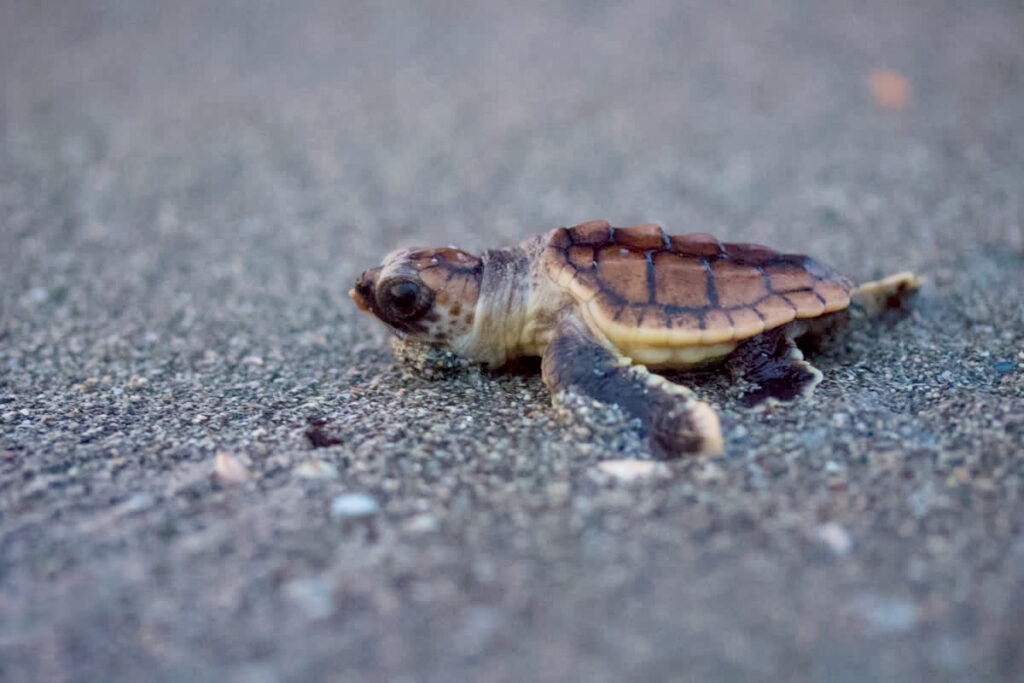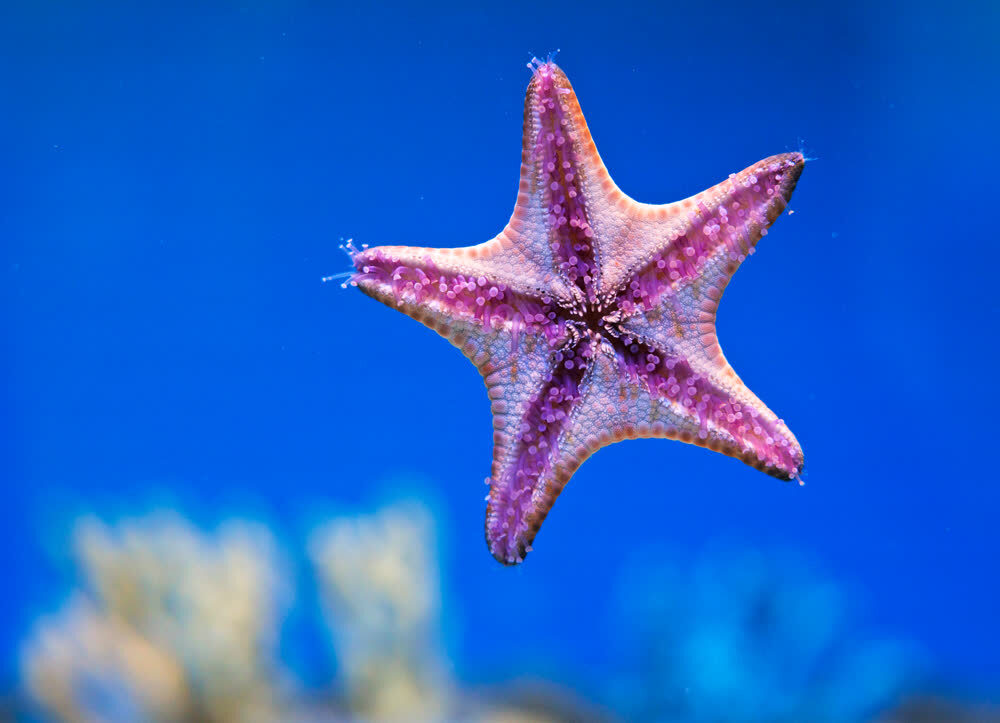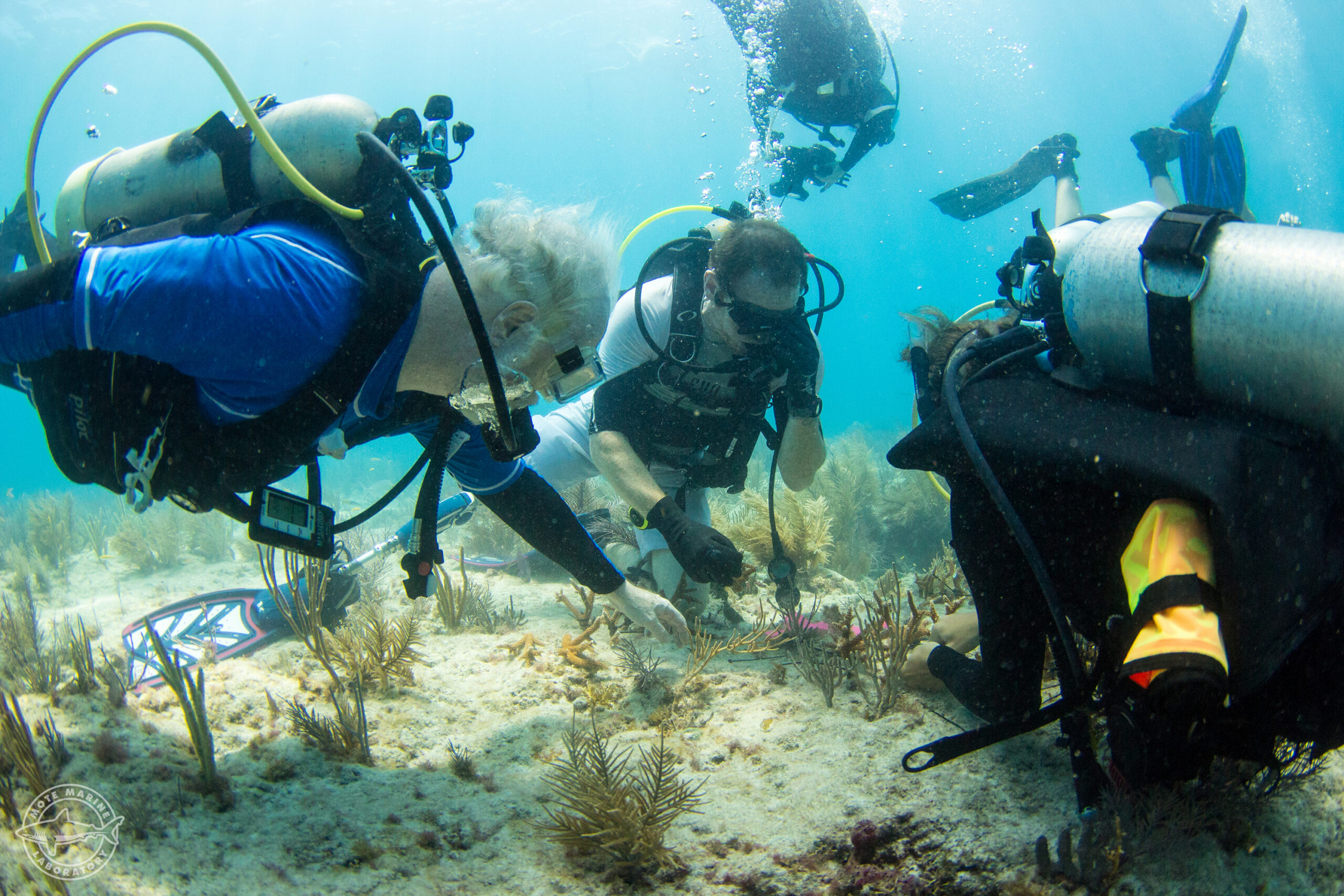Mote’s Sea Turtle Conservation & Research Program has tagged sea turtles with satellite transmitters since 2005 to track their behavior and migrations.
Nesting female green sea turtles

Green sea turtles have been nesting (laying their eggs) along southwest Florida beaches in increasing numbers in recent years. This pattern presents an opportunity to tag nesting females with satellite transmitters to better understand the lives of green sea turtles in the Gulf of Mexico. By satellite tagging them, Mote scientists are learning more about where and how often they nest, where they travel to forage (feed) after nesting season ends, and what routes they use to get there.
Green turtles tend to nest in a “saw-toothed” pattern (see graph on the right), with many nests laid one year and few nests laid the following year. Learning more about which individuals comprise these different nesting years may help us understand why they display this pattern.
Turtles that are currently transmitting can be found below.
Trouble viewing this map? Try this link!
Male loggerhead sea turtles
Trouble viewing this map? Try this link!
Frequently asked questions
Researchers attach a battery-powered satellite transmitter to the sea turtle’s upper shell, or carapace. Each time the turtle surfaces, the transmitter sends out data on its geographic location, which can be received by satellites orbiting overhead. In turn, the satellites send the data to scientists’ computers.
The data points on the turtle’s location vary in accuracy — the ones that appear to be on land are less accurate, and scientists take this into account when describing the migrations of sea turtles. Accuracy depends on the number of messages the satellite receives from the transmitter, the positions of the transmitter and satellites in relation to each other, and the environmental conditions.
Transmissions can only be picked up during short windows of time when certain satellites are overhead and the sea turtle comes up for a breath at the surface. Mote’s tags are programmed to transmit each time the turtle surfaces, though transmissions aren’t always successfully received by satellites. In other cases, tags may be programmed to transmit less often to save battery life. Also, transmissions vary in accuracy (see point 2 above), and Mote’s map does not show the least accurate transmissions. These factors can result in a few days with no received transmissions. Eventually, however, all transmitters stop sending information, and that can happen for several reasons:
- Attachment or antenna failure: Sea turtles are known to hide under rocks, and loggerhead sea turtles have even been observed “scratching their backs” on rocks and reefs. These behaviors could dislodge the transmitter or break or damage its antenna.
- Biofouling: Most transmitters have a “saltwater switch” which tells the transmitter it’s at the surface of the water (when its sensors are dry), where it can send data. However, the saltwater switch could be compromised by algae, or even coral, mussels or barnacles growing over the sensor, making it seem wet all the time. Mote scientists put anti-fouling paint on satellite tags to prevent this for as long as possible.
- Mortality: All species of sea turtles are threatened or endangered, which is why we are interested in tracking their behaviors. Scientists can sometimes guess at a turtle’s cause of death based on transmitter data: For example, if a turtle has been caught as by-catch by a commercial fishery, frequent transmissions in a line towards shore could indicate the turtle is deceased aboard a fishing vessel headed towards shore.
- Dead battery: Most batteries on transmitters can last up to a year. To save energy, transmitters only actively try to transmit when the sea turtle is at the water’s surface.





